Indian summer: A journey into a sea of colour
When you hear the words ‘Indian summer’, you probably immediately think of brightly coloured forests, wide landscapes bathed in soft light and bright blue skies. For nature-loving travellers, the period from late August to late October is a unique experience, especially in the USA and Canada. During these magical weeks in autumn, entire regions become a natural phenomenon that marks the farewell to summer. When planning your trip, it is best to start in one of the larger cities, where visitors are greeted by bright red treetops in the parks. Things really start to get colourful just outside the cities, where hidden gems, fantastic hiking trails and vast national parks beckon. The following cities and regions are perfect starting points for a late summer trip to enjoy the beauty of Indian summer to the fullest.
Explore our most beautiful Indian summer destinations
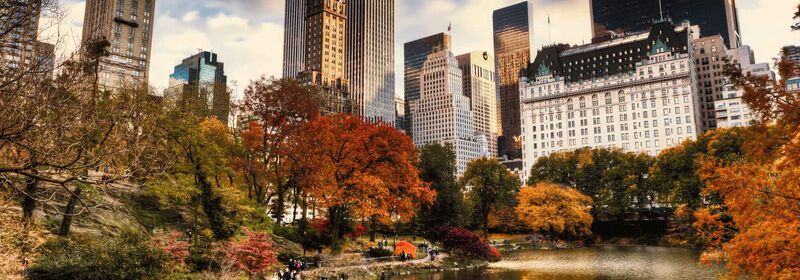
New York City and Upstate New York
The perfect combination of exciting city break and nature: the Big Apple offers an endless list of attractions, while Upstate New York invites you to explore hidden gems in the surrounding area. A stroll through Central Park in autumn amidst the hustle and bustle of Manhattan gets you in the mood for an Indian summer adventure.
If you head north out of the city, you'll be greeted by a vibrant sea of colours: lush forests, rolling hills, and picturesque lakes are bathed in a warm palette of deep reds, bright oranges, and golden yellows. From the majestic Adirondack Mountains to charming cities like Albany and Rochester, Upstate New York offers numerous opportunities to enjoy the end of summer. Other areas worth visiting include the Hudson Valley and the Finger Lakes region: take a hike along scenic trails, explore historic mansions or wineries, or enjoy a boat ride on one of the sparkling lakes.
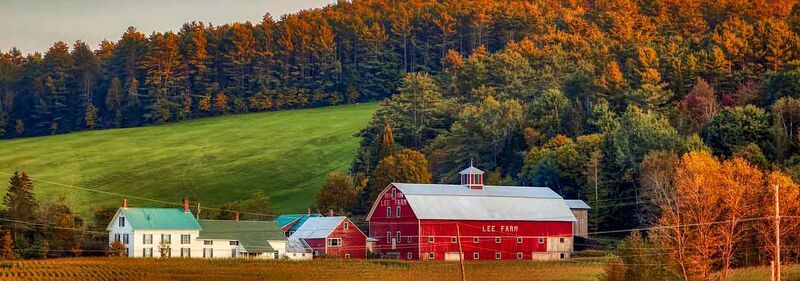
Boston: Indian summer in New England
No other destination can match the unique colours of the trees: Boston and the surrounding New England states are steeped in American colonial history and are home to the most magnificent forests in early autumn. From Maine to New Hampshire, Vermont, Massachusetts, Connecticut or Rhode Island, the golden season is synonymous with fresh air and mild weather in all states and offers plenty of outdoor activities—ideal conditions for an Indian summer tour along the scenic East Coast. Alongside the impressive colours of the trees, you'll be charmed by quaint villages, historic lighthouses and trails in the White Mountains.
Tip for those who enjoy the finer things in life: New England is famous for its pumpkin farms and apple orchards. While the harvest is in full swing here, it's worth visiting the region's numerous farmers' markets and trying a fresh slice of apple or pumpkin pie straight from the producer. In Boston itself, you can immerse yourself in the city's vibrant history and culture. We particularly recommend the Freedom Trail, which connects a total of 16 historical sites. Or visit the world-famous Harvard University and explore the Arnold Arboretum, where you can stroll among the colourful trees and expand your knowledge of flora and fauna.
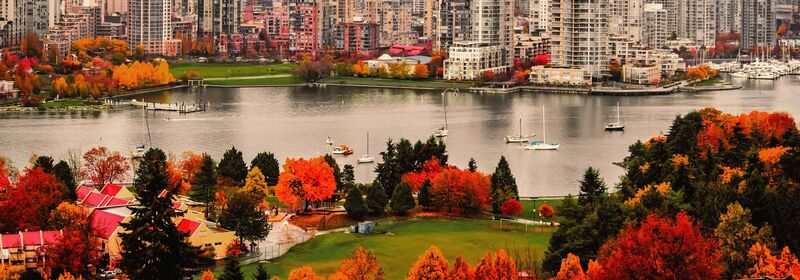
Toronto and the Canadian side of the Great Lakes
Maple trees galore: Toronto is the gateway to the province of Ontario and the Canadian part of the Great Lakes region. However, the spectacle of Indian summer in Canada is every bit as colourful as the foliage on the US side. The metropolis, which—typical of Canada—boasts numerous green spaces and trees, is cloaked in colourful hues from the end of August onwards. Explore High Park or enjoy the late summer sunshine on a boat trip to the Toronto Islands, where you can admire Toronto's autumnal skyline.
Beyond the city, the Canadian side of the Great Lakes offers stunning scenery and many appealing destinations for day trips. Outdoor enthusiasts can go canoeing on the sparkling waters of Algonquin Provincial Park and explore the vast area and enchanted forests on a hike. A visit to Niagara Falls is an absolute must. The sheer power of the waterfalls combined with the surrounding natural beauty is a unique phenomenon.
Insider tips: Western Canada and Alaska
The Canadian Rockies: The Indian summer in the Rocky Mountains in Canada is absolutely breathtaking. The best time to travel to experience this natural phenomenon in all its glory is September. As summer draws to a close, the leaves of the trees turn various shades of red, orange, yellow, and golden-brown. The mountain peaks form a dramatic backdrop to the vibrant colours of the forests, and the clear air enhances the beauty of the landscape. Arrive and take a deep breath—relaxation is guaranteed. From Calgary, the best way to travel to the various national parks in the Rocky Mountains is by rental car or campervan. The most famous are Jasper National Park and Banff National Park, which is also the oldest in Canada. Clear, turquoise lakes, blue skies and the ever-present colourful foliage of the trees make a hike or picnic an unforgettable experience.
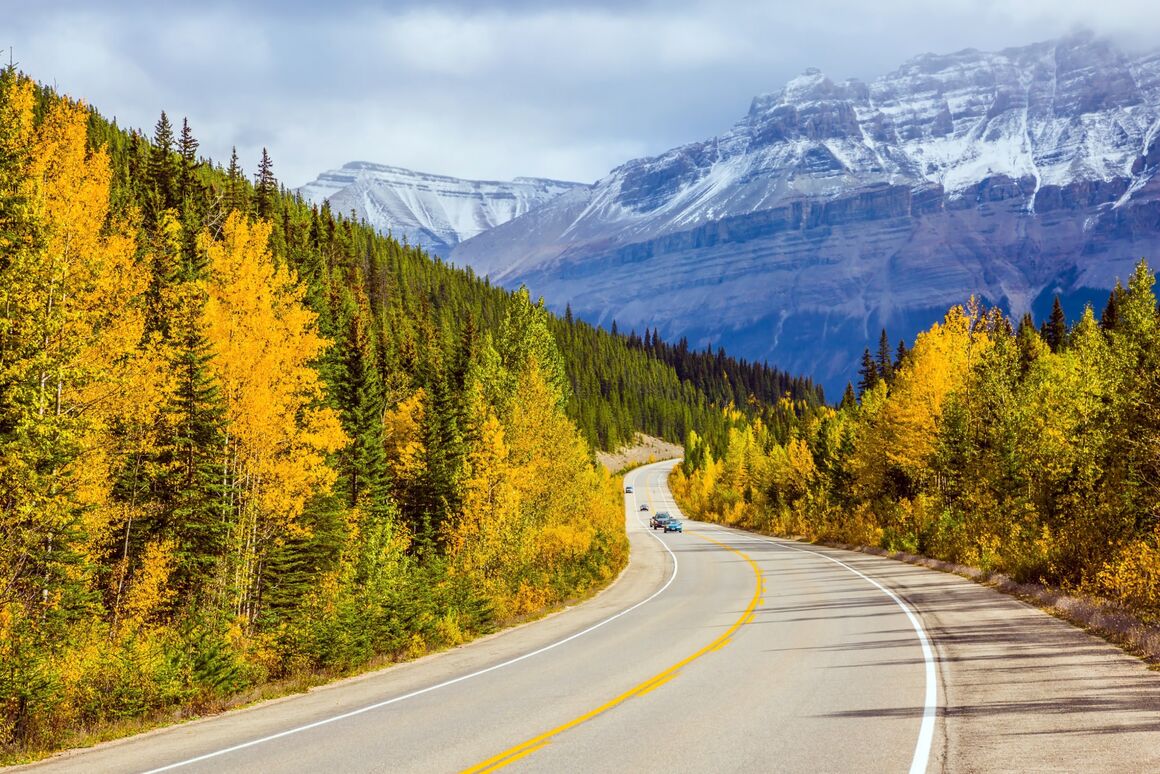
Alaska: The best time to experience the Indian summer in Alaska is usually a little shorter than in the rest of the country. Although evergreen conifers are common in large parts of the northernmost US state, in some areas the landscape is dotted with deciduous trees. Aspens, birches, and willow trees transform into a vibrant sea of colour during the Indian summer, creating a spectacular backdrop. From majestic mountains and glaciers to deep valleys, wild rivers, and fascinating wildlife, there's plenty to explore in Alaska's national parks. Naturally, the coasts also offer a variety of activities such as whale watching or boat tours that will make every outdoor enthusiast's heart beat faster. Suitable starting points for an Alaska trip are Anchorage or Fairbanks.
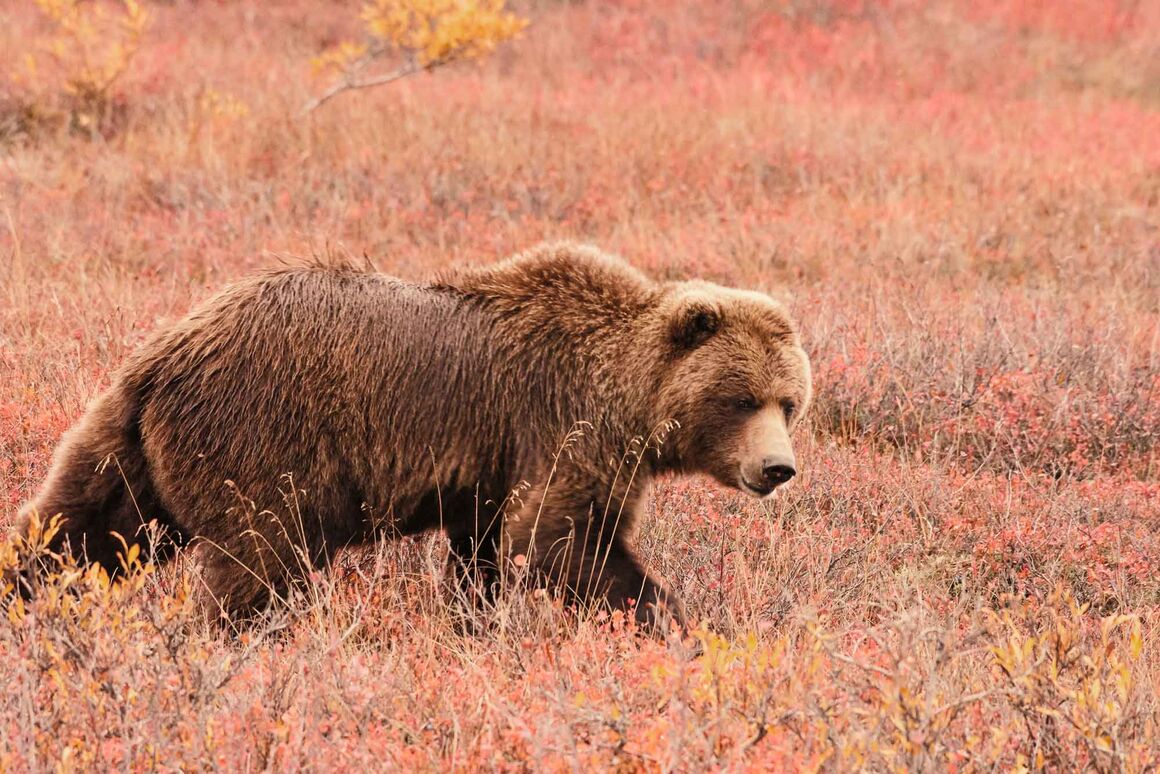
Feeling inspired? Book affordable flights now!
Indian summer: Travel information
When is Indian summer in Canada and the USA?
Indian summer typically occurs during the weeks of late August and October in the USA and Canada. The exact time may vary by region, but this is the general period when the autumn colours are at peak. The blaze of colours happens when the nights are already frosty, but mild temperatures prevail during the day.
When is the best time to travel for Indian summer in North America?
The best time to visit North America for Indian summer is usually from late August to mid or late October. At this time of year, the autumn foliage is at its peak and the temperatures are pleasantly mild.
What should you pack for an Indian summer holiday?
In early autumn, we can expect more sunshine during the day and generally warmer weather. Later and in the evening it will be a little cooler. Ideally, you should pack light clothing that you can combine with warmer clothes. Don't forget to bring comfortable hiking boots to explore the outdoors. Sunscreen, a camera and binoculars are also useful for capturing the spectacular scenery and wildlife.
When is Indian summer in Canada and the USA?
Indian summer typically occurs during the weeks of late August and October in the USA and Canada. The exact time may vary by region, but this is the general period when the autumn colours are at peak. The blaze of colours happens when the nights are already frosty, but mild temperatures prevail during the day.
When is the best time to travel for Indian summer in North America?
The best time to visit North America for Indian summer is usually from late August to mid or late October. At this time of year, the autumn foliage is at its peak and the temperatures are pleasantly mild.
What should you pack for an Indian summer holiday?
In early autumn, we can expect more sunshine during the day and generally warmer weather. Later and in the evening it will be a little cooler. Ideally, you should pack light clothing that you can combine with warmer clothes. Don't forget to bring comfortable hiking boots to explore the outdoors. Sunscreen, a camera and binoculars are also useful for capturing the spectacular scenery and wildlife.
Why is it called Indian summer?
There are many assumptions, but no definite explanations as to how the term "Indian summer" came about. It is believed that the name originated in the 18th century. Those familiar with the mythology of the indigenous peoples of North America know that the colours of the Indian summer have a special meaning. Yellow leaves symbolize the fires of the spirits, while red leaves represent the blood of the Great Bear killed by the heavenly hunter. One theory as to how the name could have originated is that the Native Americans interpreted the Indian summer as a sign of the impending harsh winter and prepared for the coming months by hunting and harvesting supplies.
What is the difference between Indian summer and Altweibersommer?
Indian summer and the German term Altweibersommer are two different meteorological phenomena. While Indian summer stands for its spectacular autumn colours and warm autumn days and is mainly associated with the USA and Canada, "Altweibersommer" refers to a period of weather in late summer or early autumn when warm temperatures return after cold nights. It is often associated with morning fog and cobwebs, while Indian summer is characterized by the bright autumn colours of the trees. The term "Altweibersommer" is mainly used in Europe, especially in German-speaking countries. Other countries and cultures have their own names for similar weather phenomena associated with the transition from summer to autumn and the impending onset of winter.
What are leaf peepers?
Did you know? The locals even have an affectionately witty term for people who come all this way to experience Indian summer in North America. The name "leaf peeper" is a combination of the terms "leaf" and "peeper", someone who is curious or observant. The term has a thoroughly positive connotation and reflects the fascination and enthusiasm that people feel when they experience the autumnal beauty of nature.
What should you generally keep in mind for a round trip during Indian Summer?
For a round trip during Indian summer, it is advisable to plan ahead and book vacation homes or hotels early, as this is a popular time to travel. Don't miss the opportunity to visit national parks and nature reserves to experience the impressive autumn colours. Plan time for outdoor activities and hikes to fully enjoy the beauty of nature.
